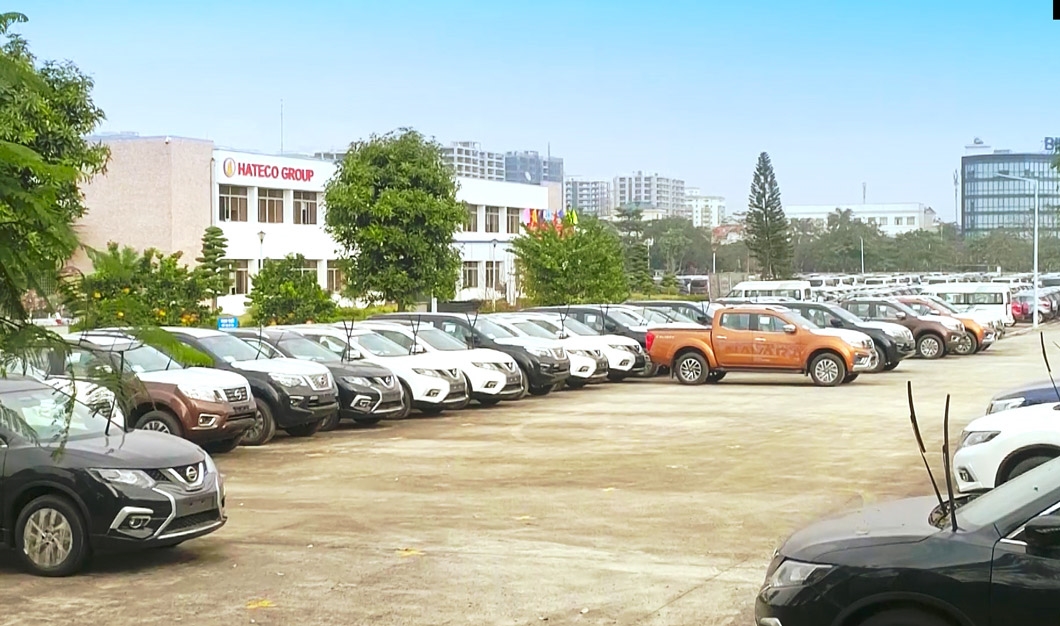Logistics activities make important contributions to export growth
As an industry that plays a supporting, connecting and promoting role in socio-economic development, contributing to improving competitiveness and has great potential to bring high added value.
With the rapid development of e-commerce, consumer habits have been changing, and the way of buying and selling has shifted from traditional to online shopping. In addition, the economy is increasingly open and integrated with more than 500 billion USD of import and export each year; the scale of freight transport by road, sea, air, and rail is very large - this is fertile ground for startups in the logistics sector to seek opportunities.
In the period of 2016 - 2020, the transport infrastructure system has been invested in and developed rapidly, promoting high efficiency; many large, modern projects have been put into operation. The focus on investment in developing transport infrastructure with focus and key points has contributed to the rational restructuring of the transport sector, ensuring harmonious connection of transport modes, promoting the strengths of each mode, reducing transport costs, improving the efficiency and quality of transport services, thereby enhancing the competitiveness of the economy.
Regarding roads: Road infrastructure has many breakthroughs compared to other areas, playing a major role in regional and international connectivity. The investment and construction of about 1,074 km of expressways in the 2011-2020 period has been completed, bringing the total length of expressways in operation to 1,163 km. The national highway network has reached 24,598 km, the main national highways have been upgraded to technical standards, weak bridges have been replaced and the load capacity has been synchronized, the proportion of asphalt concrete roads has been raised to 64%.
Regarding expressways: The Northern region has completed radial routes to the capital Hanoi; the coastal expressway connecting Hai Phong - Ha Long - Van Don. The Southern region has completed 2 expressways Ho Chi Minh City - Long Thanh - Dau Giay connecting the Southeast and the North, Ho Chi Minh City - Trung Luong connecting with the provinces of the Mekong Delta; Currently implementing 2 routes Ben Luc - Long Thanh, Trung Luong - My Thuan. The Central region has completed 2 routes Da Nang - Quang Ngai, Lien Khuong - Da Lat.
Regarding railways: The railway sector has made many efforts to maintain the infrastructure to improve safety and shorten train travel time. The allocation of investment resources for railway infrastructure is still limited, however, initially the railway infrastructure system has received investment attention and has been gradually renovated and upgraded. Currently, 04 projects are being implemented to renovate and upgrade railway works on the North-South railway line.
Regarding inland waterways: The capacity of inland waterway infrastructure has been improved thanks to the focus on investment in upgrading and renovating a number of routes in the Northern Delta and Mekong Delta regions, along with the putting into use a number of river mouth, canal, large and modern ship locks and a number of container ports combined with dry ports in the South and the North. However, the exploitation of waterways to transport goods to and from seaports needs more attention.
Regarding seaports: The seaport system has been invested synchronously with a throughput capacity of about 570 million tons/year. The two international gateway ports of Cai Mep and Lach Huyen are capable of receiving large vessels from 130,000 tons to 200,000 DWT going directly to the West Coast of the US, Canada and Europe; specialized ports can receive vessels from 100,000 tons to 320,000 tons; Step by step develop dry port system to effectively support seaport exploitation and develop logistics services.
Regarding aviation: Important airports have been upgraded including Noi Bai, Tan Son Nhat, Da Nang and newly built including Phu Quoc, Van Don, bringing the total capacity of the airport network to about 90 million passengers/year. Modern flight control technology ensures safety and increases the efficiency of airport infrastructure exploitation.
In 2020, 21 projects were promptly completed and put into operation and 19 new projects were completed and implemented. The number of logistics centers, distribution centers, dry ports, and bonded warehouses has also increased in quantity and upgraded in technology.
Regarding logistics centers: According to the preliminary report of 45/63 provinces and cities, the country has a total of 69 large and medium-sized logistics centers, concentrated in a number of industrial parks. Class I and II logistics centers, specialized logistics centers according to the planning in Decision No. 1012/QD-TTg dated July 3, 2015 of the Prime Minister approving the Planning for the development of the logistics center system nationwide until 2020, with a vision to 2030, are being focused on by provinces and cities, calling for investment and construction (Hanoi, Hai Phong, Vinh Phuc, Ha Tinh, Thua Thien - Hue, Da Nang, Dak Nong, Tay Ninh, Soc Trang, Ho Chi Minh City, Can Tho).
In 2020, there will continue to be a shift from traditional logistics centers to new generation logistics centers, applying 4.0 technology. With the sharp increase in the number of e-commerce businesses, along with the need to rent premises for storage, goods classification, order fulfillment, etc., many businesses have grasped the trend, built and invested in warehouse systems and logistics centers with the function of providing transportation services, order fulfillment, distribution, etc. in a professional, modern and high-quality direction. In particular, two typical logistics center models in terms of technology application are: international logistics centers and dry ports applying artificial intelligence (AI) and connecting 4.0 technology; and logistics centers serving agriculture.

As one of the largest logistics centers in the North, Hateco Logistics is successfully implementing a logistics ecosystem model on the ICD dry port platform integrating smart technology 4.0 applications, including a variety of services. In particular, import and export goods with special consumption tax are cleared here according to Decision 07 of the Prime Minister.
Current status of business capacity of Vietnamese logistics service enterprises
According to statistics from the General Statistics Office in 2018, Vietnam had 29,694 enterprises registered to operate logistics services. As of September 30, 2021, the Vietnam Logistics Business Association (VLA) had 515 members, including 428 official members and 87 associate members with 58 members being FDI enterprises. 46/63 Vietnamese logistics service enterprises have been licensed by the US Maritime Administration (FMC) and have Bonds providing sea freight services to and from the US as VLA members, effectively serving the development of trade between Vietnam and the US. Vietnam ranks first among ASEAN countries in the number of logistics service enterprises licensed by FMC, followed by Singapore with 53, Malaysia with 15, the Philippines with 13 and Indonesia with 12.
According to VLA's survey, the world's leading logistics enterprises (3PL, 4PL) such as DHL, DB Schenker, Nippon Express, Sinotrans... have been present in Vietnam. The market share of these foreign logistics enterprises accounts for about 70-80% of international logistics services. One of the reasons is that over 92% of Vietnam's import and export goods are sold under FOB and purchased under CIF. Vietnamese logistics enterprises mainly provide domestic logistics services such as: domestic transportation, delivery, warehousing, customs declaration, goods inspection, seaport services,...
Logistics activities contribute significantly to export growth and GDP growth.
With the attention of the Party, the Government and the efforts of the logistics service business community, in the period of 2016-2020, the Vietnamese logistics service industry has developed rapidly, initially meeting the requirements of international and domestic customers. In particular, in the context of being affected by the Covid-19 pandemic since the beginning of 2020, the Vietnamese logistics service industry has shown an important role in contributing to the implementation of new generation FTAs. In October, the domestic economic sector's export turnover reached 6.89 billion USD, down 1.8%; the foreign-invested sector (including crude oil) reached 20.41 billion USD, up 2%. In total, the export turnover of goods in 10 months, the domestic economic sector reached 69.77 billion USD, up 7.7%, accounting for 26% of total export turnover; The foreign-invested sector (including crude oil) reached 198.16 billion USD, up 20.1%, accounting for 74%. Since the beginning of the year, the country has had 31 items with export turnover of over 1 billion USD (accounting for 92.4% of total export turnover), of which 6 items have export turnover of over 10 billion USD (accounting for 63%). Regarding the structure of export groups, the fuel and mineral group is estimated to reach 3.03 billion USD, up 16.6% over the same period last year. The processed industrial group is estimated to reach 238.81 billion USD, up 17.3%. The agricultural and forestry product group reached 19.2 billion USD, up 15.1%.
According to the 2019 "Organization for Economic Cooperation and Development (OECD) Competitiveness Assessment: Logistics Industry in Vietnam" Report: Vietnam's logistics industry has an average growth rate of 12%-14%/year, contributing 4%-5% to GDP and on average in 10 ASEAN countries, the logistics industry contributes an average of 5% to GDP in ASEAN member countries, employs 5% of jobs in ASEAN, the outsourcing rate is about 60%-70%, logistics costs are equivalent to 16.8% of GDP.



 No. 1 Huynh Tan Phat, Sai Dong B Industrial Park, Long Bien Ward, Hanoi City, Vietnam
No. 1 Huynh Tan Phat, Sai Dong B Industrial Park, Long Bien Ward, Hanoi City, Vietnam Phone:
Phone: Email:
Email: